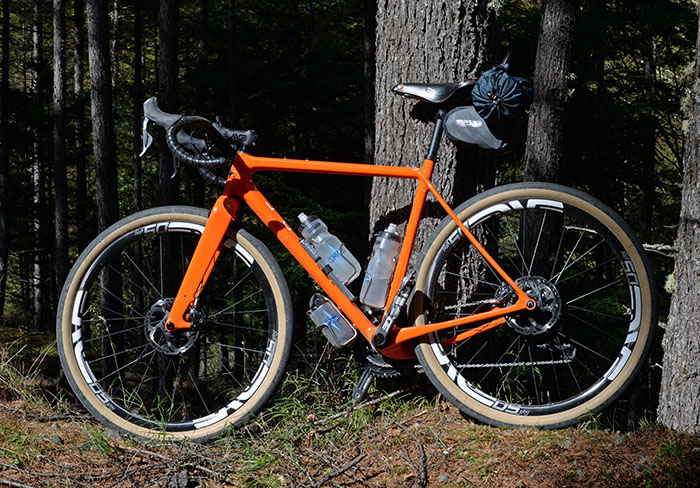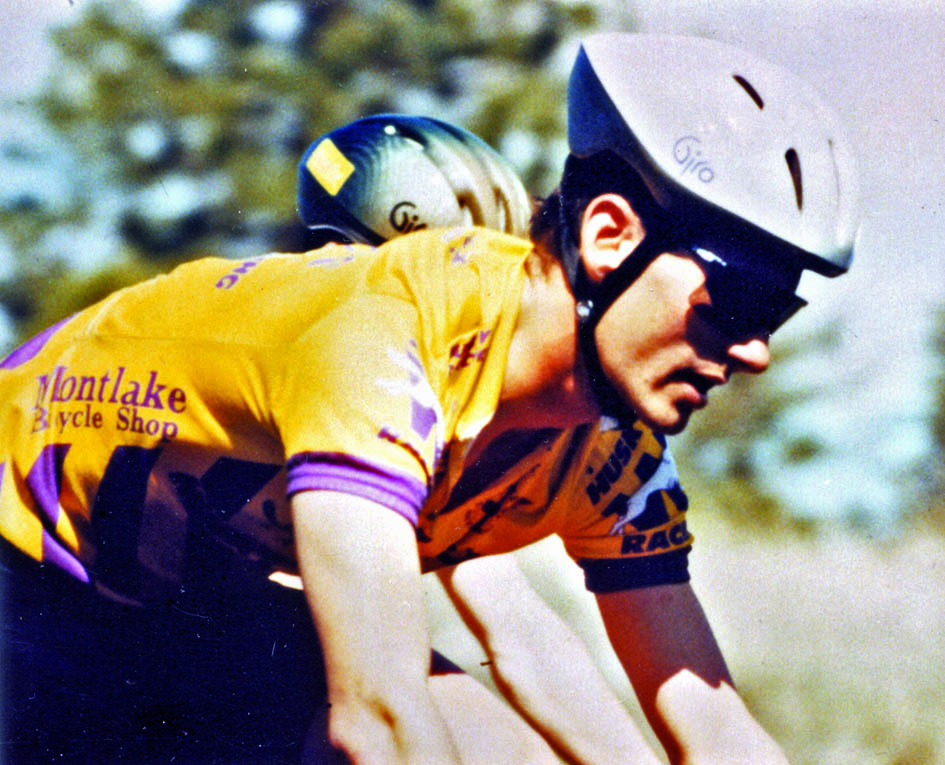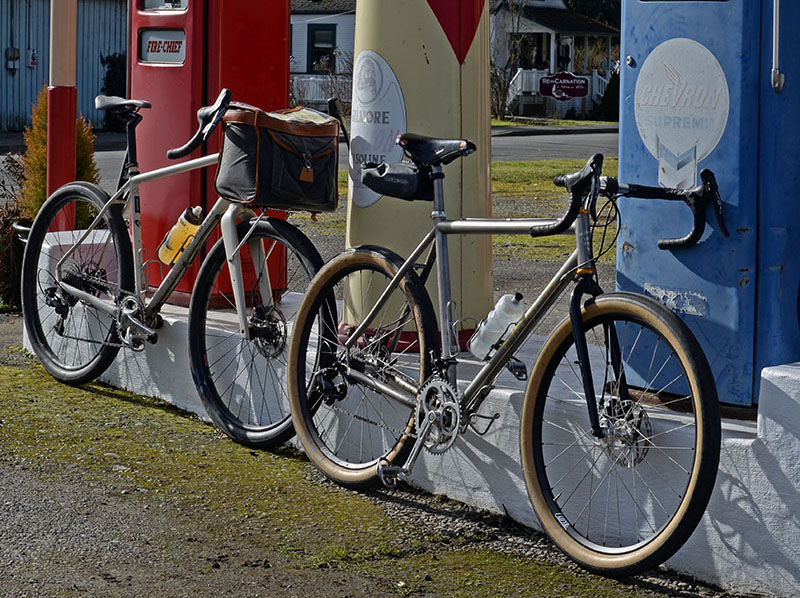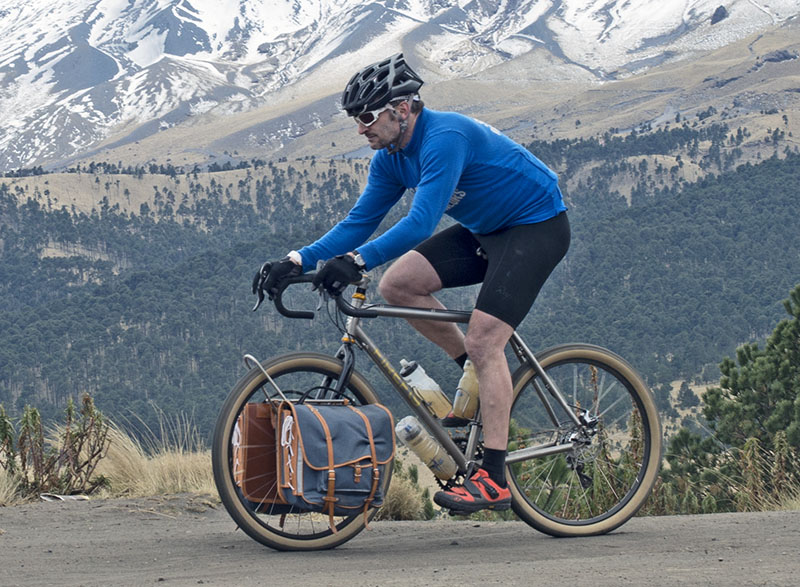What Is a Road Bike?

In past decades, there was little doubt about what made a “road” bike: narrow tires, drop handlebars, no fenders.

Then randonneur bikes were re-introduced into cycling’s mainstream, leading to some confusion. “That is a touring bike,” said many. “It has a rack and fenders.” But the performance of the randonneur bike is the same as that of a racing bike, and far from a touring bike. Basically, the randonneur bike is a racing bike with integrated fenders, lights and a small rack. (The geometry also has been tweaked to carry the load.) If you take the meaning of “road bike” literally, a randonneur bike fits it at least as well as any other bike.

And then along came wide tires, and suddenly you have a bike like the Open U.P. (above) or my Firefly. “It has 26″/ 27.5″ wheels and fat tires. It’s a rigid mountain bike with drop bars,” opined some when they saw me on one of these bikes. But it isn’t.
Imagine replacing the wheels on these bikes with 700C and installing 28 mm tires – easy enough with disc brakes. Now everybody would accept them as “road” bikes, yet the riding position, handling and even the performance would be unchanged. In fact, I would go one step further, and call them “racing bikes”, not just “road bikes”. Let me explain what I mean by “racing bike.”

The photo above shows me during my racing days. You can’t even see the bike, but there is little doubt I am riding a racing bike, not a mountain or touring bike. You can see it from my riding position.
For me, the definition of a racing bike comes down to how the bikes feels when I ride it. This is determined by:
- Riding position: A racing bike has a relatively low, stretched-out riding position.
- No equipment: A racing bike doesn’t carry a load, nor does it have fenders. Why is this important? These parts actually do change how the bike feels. When you ride out of the saddle and rock the bike from side to side, extra weight makes a difference. With less weight, the bike rocks much more easily. Even lightweight fenders and an empty rack change that feel – more so when that load is placed higher.
When I conceptualized this post, I expected this list to be long, but these two points already define the racing bike for me. There are other factors that are important, but they aren’t unique to a racing bike:
- Performance: A racing bike – in fact, any performance bike – should entice its rider to go faster. It either “planes” and gets in sync with its rider, or it’s stiff and ready to sprint forward as long as the rider stays on top of his or her pedal stroke.
- Nimble handling: A good performance bike goes exactly where you point it. It’s stable and holds its line until you ask it to change direction. Then it assumes the new course with precision and without delay. On a racing bike, most of this is due to the rotational inertia of the wheels. Whether you use 650B wheels with ultralight carbon rims and tubeless tires (as on the Open) or 26″ wheels with a more traditional setup (like the Firefly), the rotational inertia is about the same as that of a traditional racing bike with 25 mm tires. And that, as much as anything, determines how an unloaded bike feels.
On the road, this is borne out. The Open feels like a racing bike. So does my Firefly. They sprint like racing bikes. They corner like racing bikes. The biggest difference to a racing bike with narrow tires is that these bikes feel great on all roads, not just smooth ones.

This doesn’t mean that every bike with wide tires, no fenders and drop handlebars feels like a racing bike. Even before I installed a handlebar bag, the Specialized Sequoia (above left) felt like a mountain bike. Seeing the Sequoia next to my Firefly illustrated the difference between a mountain and a road bike: a more rearward weight distribution, a (slightly) more upright riding position, and much wider handlebars. The front-end geometry is different, too, with a slacker head angle and much more trail.
Riding both bikes back-to-back on mountain bike trails drove home the point: The Firefly had to be guided rather than forced, whereas the Sequoia was easy to manhandle across the bumpy terrain. The rougher the trail got, the less the Firefly was in its element, and the more the Sequoia came into its own. On gravel and paved roads, the tables were turned, and the Firefly shone with its easy, intuitive handling. Despite being superficially similar, the two bikes couldn’t have felt more different.

If the Firefly is a road bike – despite it wide tires and 26″ wheels – then what is it when equipped with low-rider racks? And what about the Specialized Diverge, a 700C bike with medium-width tires, which we also equipped with low-rider racks (below)?
Both bikes carried a camping load, but they didn’t feel like touring bikes. Of couse, the extra weight was noticeable, but all that weight is down low, so it doesn’t have a huge effect, even when riding out of the saddle. Even with a camping load, these bikes felt like performance road bikes.

If we try to categorize the Firefly or the Diverge (above) in this form, what would they be? Should we make up a new category: Performance tourer? Gran Turismo? Loaded racer? It starts getting silly, but in the end, it doesn’t matter. The categories between my favorite bikes are blurring, but what they all have in common is that they are performance bikes. And that is the important thing, because it makes them great fun on the rides that I enjoy!


